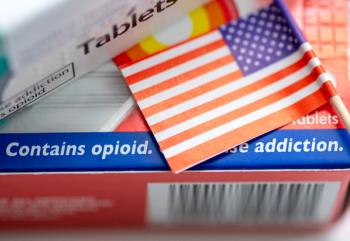
- Drug Topics December 2019
- Volume 163
- Issue 12
State Laws and Vaccination Services
Offering immunizations is a smart business move, especially for independent pharmacies.
Offering immunizations is a smart business move, especially for independent pharmacies. According to the 2018 NCPA Digest, 73% of community pharmacies now offer immunization services, although only a quarter of these pharmacies offer more than flu shots.
“Immunizations have actually become an issue of competitive parity,” says John Beckner, RPh, senior director of strategic initiatives at NCPA. “You can’t go to work for a chain these days without being certified to do immunizations. They make it mandatory for their pharmacists to do them. If you’re an independent pharmacist and you’re not doing them, you are really at a competitive disadvantage.”
State Laws for Pharmacist Immunization
Pharmacists are able to give flu vaccinations in all 50 states as well as Washington, DC and Puerto Rico, but a patchwork of state regulations govern which other vaccines can be administered, which protocol must be followed, and the minimum age patients must be before they can be immunized at a pharmacy.
A promising source of revenue for both chain and independent pharmacies is the inclusion of travel clinics that offer necessary CDC-recommended travel vaccinations, such as yellow fever, cholera, and malaria. States often put more restrictions around travel vaccines, such as needing a physician-signed protocol or prescription to administer.
“Practice acts are unlikely to look the same from one state to another,” says Jeffrey Goad, PharmD, MPH, professor and chair, department of pharmacy practice, Chapman University School of Pharmacy. “Within one state’s pharmacy practice act, that state can have very detailed regulations that describe which vaccines, which ages, and under which circumstances a vaccine may be given by a pharmacist.”
While some state details can cover pages, other states may have regulations that consist of a single sentence, authorizing a pharmacist to independently initiate and administer vaccines listed on the routine immunization schedules recommended by the federal Advisory Committee on Immunization Practices (ACIP), according to CDC guidelines, and on patients older than 3 years.
“The US does not really have an oversight body or process for creating regulations specific to pharmacists in each state,” says Lauren Angelo, PharmD, MBA, assistant dean of academic affairs and associate professor of pharmacy practice at Rosalind Franklin University of Medicine and Science. “In some states, there are no restrictions on the types of vaccines or age limits.”
Given the absence of an oversight body or process, the trend to expand pharmacists’ authority is being enacted slowly, on a state-by-state basis.
The latest update to state regulations was enacted in October in North Carolina. The new regulations lowered both the minimum age for flu shots in pharmacies and added the authority to administer adult immunizations including: herpes zoster, hepatitis A and B, meningococcal, HPV, and tetanus. In 2018, Missouri lowered the minimum age requirement for immunizations from 12 to 7 years, if authorized by a physician; Iowa authorized vaccination, pursuant to statewide protocols, to any patient over the age of 6 months. Pennsylvania currently has a bill in committee that, if passed, would also lower the minimum age.
Authority to immunize has also been expanded during disease outbreaks, as was the case during the 2018 flu season when Governor Andrew M. Cuomo signed an executive order to let New York’s pharmacists administer flu vaccines to children from ages 2 to 18. The order was given in response to the rising number of reported cases-previously, pharmacists could only administer the flu vaccine to patients 18 and older.
“Laws and regulations are getting more friendly toward pharmacists immunizing,” says Beckner. “The restrictions tend to be either with age or certain vaccines and I think things are movinginthedirectionofpharmacists being able to give all the adult vaccines that the ACIP recommends. We have a way to go as certain states are more restrictive than others, but we’re definitely moving in that direction.”
States may grant authority to immunize independently, through a collaborative agreement or via a prescription. As of 2016, 17 states let pharmacists independently administer select vaccines, while the other 33 states, Puerto Rico, and Washington, DC followed other protocols.
“Collaborative practice agreements often take time and financial resources on the part of the pharmacist and physician to maintain,” says Goad. “States that require a prescription for certain vaccines definitely drive up the cost by requiring a patient to see the physician just to get a prescription for a vaccine that they then have to go to the pharmacy and have administered. The pharmacist still has to screen the patient for appropriateness even though there is a prescription.”
Looking to the Future
According to Mitchel C. Rothholz, RPh, MBA, chief strategy officer for the Amer- ican Pharmacists Association (APhA), the APhA vision for pharmacy-based immunizations is that pharmacists in every state should ultimately have the ability to administer any ACIP recommended vaccines. That goal is being realized on a state-by-state basis.
“Getting there is working with individual states, working closely in partnership with the National Alliance of State Pharmacy Associations (NASPA), and the state associations, trying to address this on a state level, working through what their priorities and needs are,” says Rothholtz.
Achieving the vision could benefit both pharmacists and patients. A study by the Pacific Research Institute suggests that letting pharmacists administer all adult vaccinations recommended by the CDC could help raise the vaccination rate and save lives. Statistics suggest that if immunizations are offered at convenient hours for patients (ie, at night, on weekends, and without having to make a doctor’s appointment), more people will get immunized.
That’s an important consideration-90,000 Americans die of vaccine-preventable deaths annually in the United States.
Obstacles and Opportunities
In the last 3 years, Idaho (2017), Rhode Island (2018), and Utah (2019) passed bills that allow technicians to immunize patients, freeing up pharmacists to focus on other services.
“When pharmacy technicians can immunize, under the supervision of the pharmacist, it frees the pharmacist to engage in other patient care or counsel- ing type activities,” says Beckner. “The role of the technician is expanding. They’re able to do more and more and they’re certainly able to do the technical tasks. That frees the pharmacist to do the cognitive functions and tasks that require judgment in the pharmacy.”
More states now also require pharmacists to report immunizations to registries, since digital records can help coordinate care among patients and multiple health professionals. All 50 states, US territories, and the District of Columbia have at least one regional or local immunization registry.
“People can access those registries and we can find out if somebody has gotten, say, dose 2 of the 2-dose series,” says Beckner. “If they forgot whether they got their pneumonia vaccine, the pharmacy can access the registry and find out without having to rely on the patient to provide that information.”
Another obstacle standing in the way of more vaccinations in pharmacies is training. While most graduates of pharmacy school have received immunization training, state laws don’t necessarily require it.
“Not all states specify training or even when they do, how much training or by what method,” says Goad. “That’s why state laws are antiquated as pharmacists follow the standard of practice which is the national training program or a program that mimics the CDC immunization training program. In addition, the school of pharmacy accrediting body stipulates that immunization training must occur. So, even with state law, the science and practice of pharmacy-based immunization has moved ahead. State laws are just out of date and can present an obstacle to people getting the vaccines they need, putting patient lives at risk.”
Articles in this issue
almost 6 years ago
Top Pharmacy Stories of 2019almost 6 years ago
What Pharmacists Need to Know About COPD and Transitions of Carealmost 6 years ago
Encouraging Healthy Habits in Patients with Osteoarthritisalmost 6 years ago
Technologies Moving Pharmacy Forwardalmost 6 years ago
Salaries and Stress Stagnate: 2019 Pharmacy Salary Survey Resultsalmost 6 years ago
Opioids: The Pharmacist’s RoleNewsletter
Pharmacy practice is always changing. Stay ahead of the curve with the Drug Topics newsletter and get the latest drug information, industry trends, and patient care tips.































































































































































